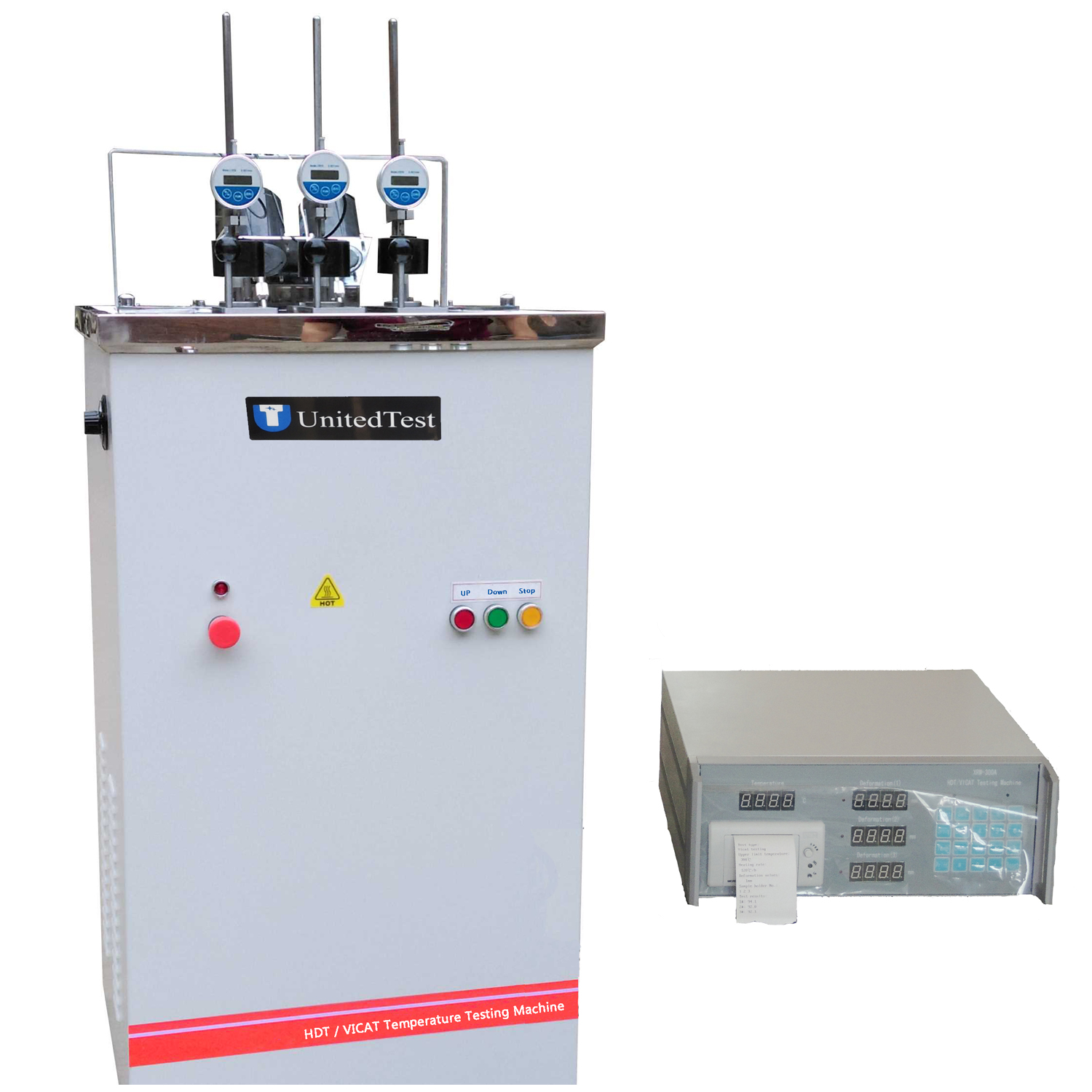Optimize the Stress Cracking Strength of Polyolefin Geomembrane with Our Superior ASTM D5397-Compliant Testing Equipment
This test method is used to develop test data from which the susceptibility of polyolefin geomembrane sheet material to stress cracking under a constant tensile load condition and an accelerated environmental condition can be evaluated.
When it comes to enhancing the performance and durability of polyolefin geomembranes, the importance of rigorous testing cannot be overstated. At Beijing United Test Co.,Ltd. , we offer advanced testing solutions that comply with ASTM D5397 standards, specifically designed to optimize stress cracking strength and ensure the highest quality in your geomembrane applications.
Understanding the Importance of Stress Cracking Strength
Stress cracking is one of the most critical failure mechanisms affecting polyolefin materials. When subjected to constant load, these materials can develop cracks that propagate rapidly, ultimately leading to material failure. Our testing methodology provides essential insights into this behavior, allowing for comprehensive assessments that inform the development of stronger and more resilient geomembranes. By optimizing the stress cracking strength, you can enhance the lifespan and reliability of your projects, reducing the risk of unforeseen failures and costly downtimes.
Our Testing Equipment: ASTM D5397 Compliant
We pride ourselves on utilizing cutting-edge testing equipment that adheres to the rigorous standards set by ASTM D5397, the widely acknowledged benchmark for testing the stress cracking resistance of plastic materials. Our equipment is designed to provide accurate, repeatable, and reliable results under controlled conditions, ensuring that your geomembrane products meet and exceed industry expectations.
Features of Our Testing Equipment:
Precision Engineering: Our testing apparatus is engineered to ensure exact replication of conditions that geomembranes might face in real-world applications. This precision guarantees that our evaluations are reflective of actual material performance.
Controlled Environment: Tests are conducted in a controlled environment, eliminating external variables that might skew results. This focus on optimal conditions allows for more decisive insights into the material's capabilities.
Comprehensive Data Processing: We utilize advanced data processing techniques to analyze fracture times accurately, providing you with detailed reports that facilitate informed decision-making.
The Notch Constant Load Tensile Test: A Key Component
To effectively measure the stress cracking strength of polyolefin geomembranes, we employ a notch constant load tensile test. This specific test method is crucial because it simulates conditions that geomembranes typically encounter, involving exposure to stress over extended periods.
How the Test Works:
Sample Preparation: Polyolefin samples are prepared with precise notches, which act as stress concentrators, encouraging crack formation under load.
Loading Conditions: The samples are subjected to a constant load while being monitored in a controlled environment that mirrors potential field conditions.
Fracture Time Measurement: The time taken for a crack to propagate from the notch to failure is meticulously recorded and analyzed, providing valuable data on stress cracking resistance.
Trustworthy Evaluations for Enhanced Durability
At UnitedTest, our goal is to provide evaluations you can trust. The results from our ASTM D5397-compliant testing are designed to give you confidence in your geomembrane materials. By understanding the fracture behavior under specific loads and conditions, you can make informed choices that directly impact the durability and longevity of your projects.
Benefits of Our Testing Services:
Enhanced Material Selection: Our precise assessments empower you to choose the right geomembrane products tailored to your project's specific needs.
Diminished Risk of Failure: Knowledge of a material’s stress cracking performance allows for proactive measures, minimizing the risk of failure in critical applications.
Improved Overall Performance: By optimizing the stress cracking strength, you not only enhance the individual performance of geomembranes but also contribute to the overall success of your project.
Applications of Optimized Polyolefin Geomembranes
Our stress cracking strength optimization services serve a wide range of industries and applications, ensuring that your geomembrane materials are fit for purpose. Whether you're involved in construction, water management, mining, or landfill applications, our testing services provide assurances that your materials are ready to withstand the challenges they will face.
Industries Benefiting from Our Testing:
Environmental Protection: Ensure that your geomembranes effectively manage and contain hazardous materials, protecting surrounding ecosystems.
Water Infrastructures: Maximize the reliability of geomembranes in water containment systems such as ponds, reservoirs, and canals.
Landfill Liners: Optimize geomembranes for landfill applications to provide robust barrier systems against leachate, preserving groundwater quality.
Conclusion
For those seeking to enhance the durability and performance of polyolefin geomembranes, UnitedTest's ASTM D5397-compliant testing services offer a vital resource. Through our notch constant load tensile tests, we can provide you with comprehensive analyses of fracture times, empowering you with the knowledge to make informed decisions regarding your material selections.
With our commitment to precision, reliability, and customer satisfaction, you can trust that our evaluations will elevate the performance of your projects and ultimately lead to success. Reach out to us today to discuss how our testing services can be integrated into your material development or quality assurance processes, and ensure that your geomembranes are optimized for excellence in every application.
Invest in your project's future with the confidence that comes from expert testing and evaluation. Choose UnitedTest—where quality is the foundation of all we do.
If I miss anything about the notch constant tensile load tester. Alternatively, if you have more detailed information, you can send an email to export@unitedtest.com













